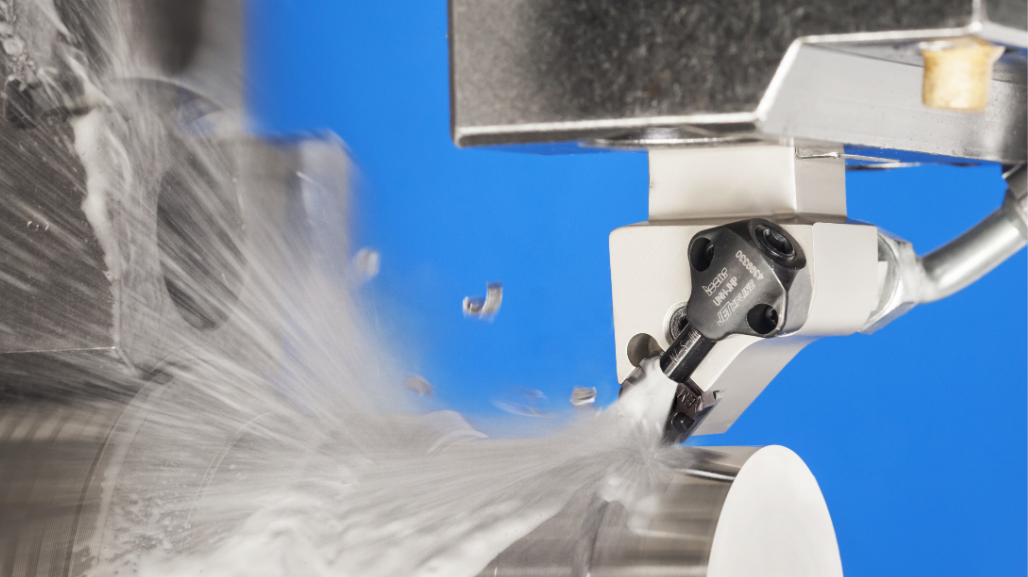Video: Calibration Training–The Real Purpose of Calibration
In this second video of their Metrology Training Lab series, Mitutoyo continues calibration training.
In this second video of their Metrology Training Lab series, Mitutoyo continues calibration training.

In this second video of their Metrology Training Lab series, Mitutoyo continues calibration training by addressing the following questions:
What does calibration mean?
What is the real purpose of calibration?
What makes a bunch of measurements an official calibration?
Watch the video above to learn more about the real purpose of metrology calibration.
Previously Featured on Mitutoyo's YouTube channel.
Hello, I’m Jim Salsbury with Mitutoyo America Corporation and welcome to the metrology training lab. In this episode we're going to continue our discussion about calibration. In a previous episode we discussed that calibration is critical to maintaining the quality and accuracy of your measuring equipment but what does that mean? What is the real purpose of calibration? What makes a bunch of measurements an official calibration?
Let's use these two common measuring instruments. These outside micrometers and this high accuracy height gauge called the Mitutoyo linear height. In order to understand the purpose of calibration, we will start by looking at the everyday use of the measuring equipment. Say this linear height is used daily to measure some part like this. I'll measure on the surface plates here then bring in the parts and measure this height. Whoever is using this measuring system wants to make sure the overall accuracy and quality of this measurement process meets their needs.
Now different organizations and different industries have various quality standards and rules on how to analyze a measurement process. Some people talk about gauge repeatability or gauge R&R. Some talk about measurement uncertainty. But in the end they all have one thing in common—trying to manage sources of air in measurements over time. For this linear height, for example, the quality of this height measurement depends on many things like the operator skill, the environment that we're in, the surface plate that we're using, and of course the linear height gauge itself.
And that's where calibration comes in. In this case the purpose of calibration is to determine the status of the accuracy of this linear height. Is it performing or still performing as accurately as expected, is the current accuracy within stated requirements and specifications and if not what do we do. So when this linear hight or these micrometers leave the shop floor and come in for calibration, the first step is to check it out to see if it's functioning properly to assess what's called the as-found or as-received condition.
This is done before any cleaning, before any repair, before any service or adjustments. Checking the as-found accuracy is one of the most critical steps in calibration as it provides the necessary data to understand the stability or the reliability of the measuring equipment over time since the last time it was calibrated. If the as-found data is out of tolerance, then you have three things you need to do.
First, you need to determine if that out-of-tolerance condition has been impacting your product quality. What does this gauge being out of tolerance today mean for the measurements that you made just yesterday or a week ago or a month ago. Second, if the gauge is out of tolerance, maybe your calibration interval needs to be adjusted to prevent that from happening again. Calibration interval should be based on the historical performance of the measuring instruments and the as-found calibration results are the key data used to lengthen or shorten calibration intervals. Now third, if the gauge is out of tolerance what can be done to fix that? For some equipment like this micrometer, a good cleaning is often enough to bring it back within tolerance. After the as-found data is collected, it is typical and calibration to clean and perform any recommended preventive maintenance after that's done.
In some cases like this in digital measured equipment like this linear height gauge, there is some kind of maintenance mode that authorized technicians can access that provide for corrections or adjustments to be made to the accuracy of the instruments. And in some cases, cleaning maintenance adjustments are not enough and then repair is usually needed. In general, measuring equipment should perform within its specification over the lifetime of the equipment. That should be your expectation that at least is definitely our expectation here at Mitutoyo America.
Except in some very rare cases you should never need to derate the accuracy of your measuring equipment, assuming you've taken proper care of it and assuming it was well built to start with. Coming back to the calibration, after any cleaning or adjustments are done, the as-left accuracy data is then collected. The same accuracy tests used for the as-found condition are then repeated to determine the final condition of the measuring equipment before it's returned back to service.
A complete calibration includes the as-found readings, any necessary cleaning maintenance and adjustments, and then the as-left readings but-but-but-but as we have discussed in prior episodes of the metrology training lab, just saying calibration does not mean you will get all of that. You need to be careful when contracting calibration services. Calibration verification, manufacturer's specifications, adjustments, conformity assessments, you never know what you might get so specify your needs carefully.
One important aspect of calibration that we'll cover in a different episode is the extent of calibration that is needed. For example, how many different tests are needed for the number of test points required to be considered a sufficient calibration. This is, however, a good time to revisit an important concept that we introduced in a prior episode of the metrology training lab. We discussed what we called user calibrations that are done on a regular basis as part of the routine use of the measuring equipment.
For example, on a micrometer the zero point needs to be set on a digital mic. We simply close the measuring faces and press the zero or origin button on a mechanical micrometer. We need to use a wrench to physically rotate the sleeve to set the zero and on a larger micrometer like this euro to 1 inch mic we need to introduce a micrometer standard or a gauge block on the linear height. Here we have interchangeable probes when each of the different probes is used or at some other time during the use of it, the probe needs to be calibrated. This is usually done with the probe calibration block. By measuring this in different directions, we're able to determine or calibrate the probe diameter. All of these user calibrations from setting zero on the mics to determining the probe diameter on the linear height are very important aspects of calibration, but they're typically not considered part of an official calibration. Rather, those are covered under proper use of the measuring equipment. However, they are very critical to making accurate measurements and every organization needs a method to manage this properly. So I hope you've learned a few things about the purpose of calibration in this episode. Thank you, I'm Jim Salsbury and I'll see you next time from the metrology training lab.
Established in 1963, Mitutoyo offers a full product line of precision measuring tools including calipers, micrometers and indicators, as well as instruments and equipment. Mitutoyo is the leading metrology company in the world and is committed to developing breakthrough technologies for its comprehensive range of dimensional measuring tools, instruments and systems. Mitutoyo continues to develop the most advanced and sophisticated metrology equipment available.





